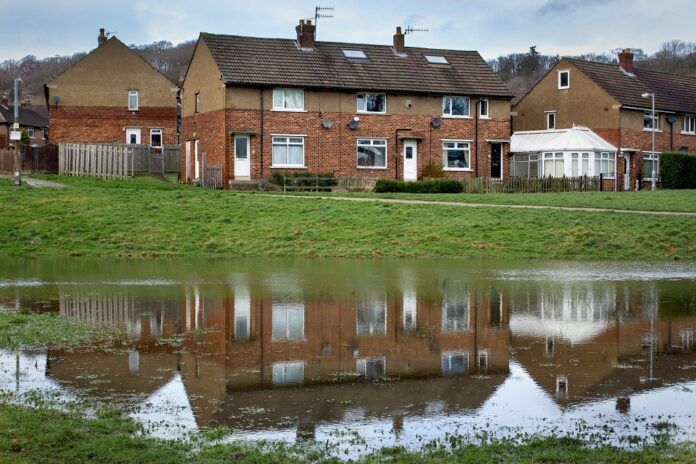New research by the University of Southampton for the National Federation of Roofing Contractors (NFRC) suggests that the UK should rethink the way it builds, maintains, and upgrades its roofs to handle a wetter and warmer climate.
The research highlights the potential of various roofing technologies to:
- Cool the temperature of a building as well as the surrounding environment.
- Store and slow the rate of rainwater runoff before it even reaches the ground.
- Generate renewable energy on site through solar PV.
However, the NFRC is now urging the government to break down many policy, planning and financial barriers, and improve the lack of green skills, holding back these technologies.
Recommendations
The NFRC is calling on the government to:
- Fast-track proposed changes to building regulations relating to net zero homes.
- Provide financial incentives to homeowners and commercial property owners to retrofit their buildings.
- Put pressure on local authorities to incorporate roofing technologies that help to build climate resilience into their planning policies.
The NFRC is also urging the roofing industry to invest in green skills and diversify their businesses to incorporate new technologies that help build resilience.
Changes to the UK climate
Evidence from the UK climate change projections programme (UKCP) shows that over the next half-century, the UK is expected to experience:
- Warmer and wetter winters, and hotter and drier summers.
- A higher frequency and intensity of extreme weather events, including torrential rain and heatwaves.
- Clearer skies in summer.
Modelling of reference buildings across 15 cities across the UK in 2030, 2050 and 2080 using future climate projections, found the two greatest risks facing the UK’s built environment from climate change are flooding and overheating.
Overheating
The risks vary in different parts of the UK with overheating being a much greater concern in the South East and, in particular, London, where average temperatures are expected to increase by 3ºC by the 2080s and daily maximum temperature is expected to increase from 22.2 ºC to 27.9 ºC by the 2080s. Buildings at most risk are those with dormer and loft conversions, schools and flats.
The Committee for Climate Change expected the number of heat related deaths to triple to over 7,000 a year by the mid-century. With more and more people now working from home, overheating could also have a knock-on impact on productivity levels.
Flooding
Higher levels and increased frequency of rainfall will increase the possibility of water penetrating through a roof fabric causing leakages, but also severe flooding.
The UK’s latest Climate Change Risk Assessment puts flooding caused by extreme rainfall as a high risk for the country by 2080, in terms of both building damage and productivity loss.
Commenting on the research, Patrick James, professor of energy and buildings at the University of Southampton, said: “Over the next century, we expect the UK to have warmer and wetter winters and hotter and drier summers, with more extreme weather events such as torrential rain and heatwaves. Through modelling-built forms across 15 cities in the UK, over three different time periods, we can highlight characteristics that increase risk to help decision makers build resilience.
“We must all do our bit to build resilience for these changes to our climate, but what this research shows is that roofing has a key role to play in this. We found that in all locations, a well-designed roof with good ventilation and a medium/light coating can significantly reduce the risk of overheating.”
He concluded: “Evidence from the research community has highlighted the benefits of roofing technologies such as green and blue roofs, notably to reduce flooding risks, as well as providing many other benefits including enhancing biodiversity, reducing the urban heat island effect, and cutting down pollution levels.”
James Talman, chief executive of the NFRC, added: said: “This research shows that roofs have the ability to build resilience to climate change—whether that be as simple as helping to reduce overheating through greater reflectivity, protection against the cold through enhanced insulation, generating electricity from the sun through rooftop solar PV, or reducing the risk of flooding through attenuating water in blue and green roofs.
“Whilst the evidence is clear, many barriers remain. The roofing industry is already experiencing a skills shortage and an ageing demographic, so unless we invest in green skills now, we won’t have the people we need to be able to deliver this critical work. Furthermore, there are also significant policy barriers – outside of London, the UK is far behind many other countries when it comes to encouraging green, blue and cool roofs, and this needs to change. The government must also introduce a proper retrofit policy, to replace the failed Green Homes Grant, to encourage homeowners to upgrade their homes.”
>>Read more about how climate change is impacting the built environment here.




